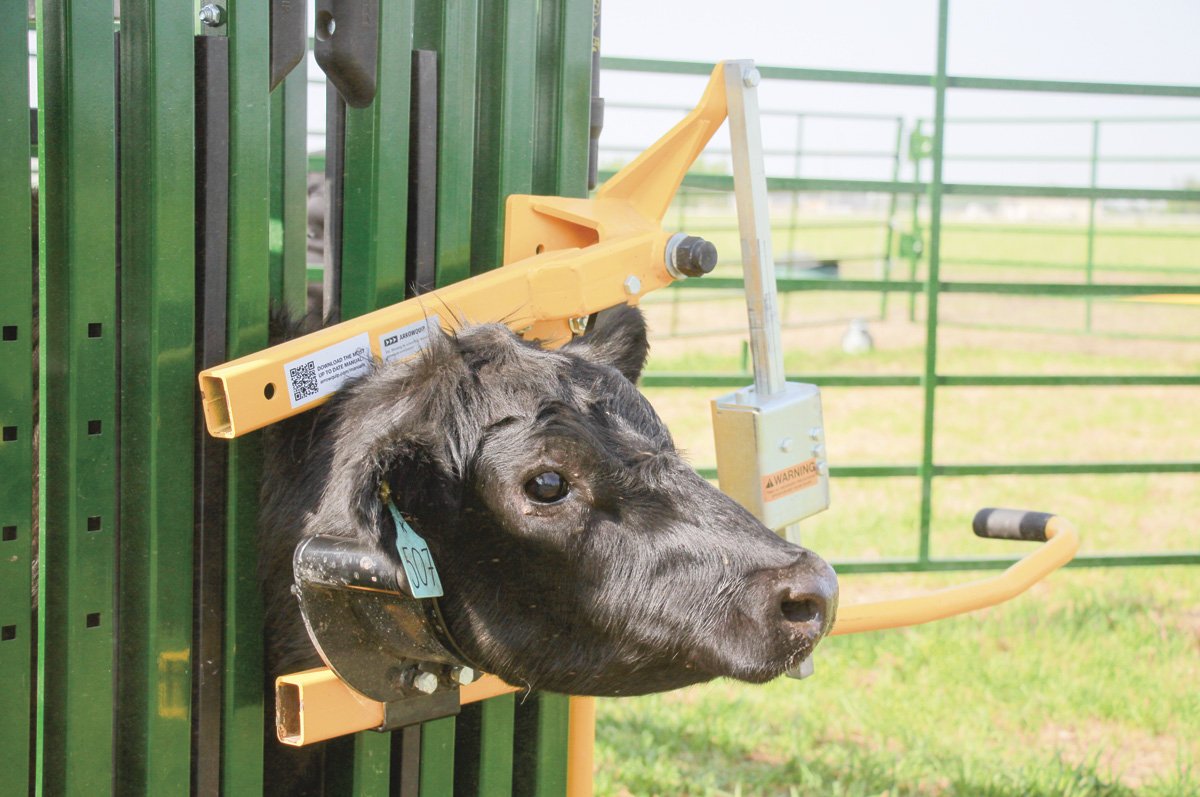Not all manual chutes bring challenges like complicated levers and headgates that need adjusting. Do you need a more efficient and stress-free solution for your operation?
The industry has a range of innovative, economical and efficient manual chutes, but hydraulic chutes completely change the game. Often associated with large-scale operations and feedlots, hydraulic chutes offer benefits that can revolutionize cattle handling for operations of all sizes.
Let’s explore the key differences between manual and hydraulic chutes:
The power of hydraulic chutes
- Flexibility: Some hydraulic chutes offer parallel, V and other options. To keep your system simple and easy to use, look for hydraulic chutes that allow you to manage the headgate, tailgate, squeeze and even head restraints all from one control panel. With the option of powering the hydraulics through electric or gas power packs or connecting to hydraulic equipment with an adaptor, these chutes offer reliability, versatility, efficiency and ease of use.
- Tailored to your operation: A common misconception is that hydraulic chutes are only suitable for large operations. Even if you have a smaller operation, a hydraulic chute can be a valuable investment. According to veterinarian Roy Lewis, any operation with over 250 head of cattle should consider a hydraulic chute. Additionally, if your cattle management requirements involve regular handling tasks such as artificial insemination (A.I.), or if you aim to meet consumer demands for traceability, a hydraulic chute becomes essential.
- Addressing unique challenges: Cow-calf operations face distinct cattle-handling challenges. Managing cattle of varying sizes can be time-consuming and frustrating with the wrong chute. Hydraulic chutes can eliminate this headache by requiring little to no adjustments with fast-acting hydraulic headgates. With hydraulics, you can efficiently handle cattle of all sizes without wasting precious time.
- Help when you need it: Finding reliable help can be difficult. Hydraulic equipment offers a better alternative for those who frequently work alone, with easy-to-use and accessible controls. By reducing physical fatigue associated with catching, restraining and releasing livestock, hydraulic chutes enable operators and animals to work for extended periods without compromising their health, well-being and safety.
- A long-term investment: While the upfront investment for a hydraulic chute is often higher, the long-term rewards are substantial. By minimizing cattle stress during handling, these chutes can help enhance weight gain and improve overall animal welfare, like reduced losses due to dark cutters and bruising. When you consider the impact on your bottom line, the profits and efficiency gains can outweigh the initial investment.

Manual chutes provide an affordable and reliable cattle-working system for budget-conscious operations. Photo courtesy of Arrowquip.
The merits of manual chutes
While hydraulic cattle chutes offer advantages and have become increasingly popular, manual chutes still hold value for certain applications:
- Affordability: For smaller operations with limited budgets or those who require a simpler solution, manual chutes can provide a cost-effective option without compromising on basic functionality.
- Simplicity and reliability: Most manual chutes have a straightforward design and operation, relying on the physical force and skill of the handler. They offer a reliable solution for livestock handling without the need for complex hydraulic systems, which can require specialized maintenance.
- Portability and flexibility: Manual chutes are often more portable and easier to move around compared to hydraulic chutes, making them suitable for temporary setups or operations that require frequent repositioning. The fact that the chute is manual, obviously means you won’t need a power source either, making it functional anywhere.
- Skill and experience: Manual chutes require the handler to undertake in a bit of a learning curve in order to have a certain level of skill, experience and expertise in cattle handling, which people often view as an advantage for experienced handlers who are familiar with the intricacies of working with livestock and can adapt their techniques accordingly.
- Minimal power requirements: Manual chutes do not rely on external power sources, making them suitable for remote locations or areas with limited access to electricity or hydraulic systems.
- Backup option: In case of hydraulic system failure or maintenance issues, having a manual chute as a backup can be a valuable contingency plan.
It is important to note that the value of manual chutes may vary depending on the specific needs and circumstances of the operation. While hydraulic chutes offer advanced features and increased efficiency, manual chutes still have their place in the market by providing a more affordable, yet reliable alternative for certain applications and budget-conscious operations.
It is essential to consider the specific needs of your operation and the potential long-term benefits when selecting a cattle chute. There are many chutes across the industry that offer comprehensive and simple cattle handling solutions, regardless of your operation’s size or budget.
Visit a trade show or your local cattle equipment dealer, look at reviews and talk to other producers in the industry to discover for yourself the efficiency and ease of use of each kind of system to maximize your operation’s potential.







